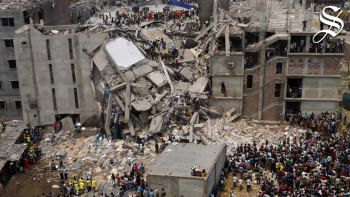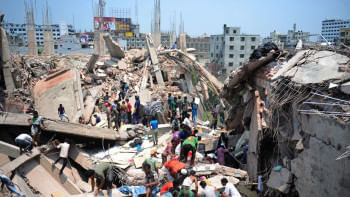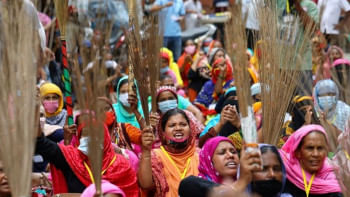10 years on, Rana Plaza victims are still owed justice

A disaster of the scale of the Rana Plaza – considered to be the deadliest garment factory accident in history – must involve a multidimensional response. Healing or recovery must take place at the victim level, at the industrial level, and at the state level. After 10 years since the 2013 accident, which killed 1,135 people and injured about as many, we must admit that there has been noteworthy progress in terms of industrial reforms as well as rebuilding the lives of individual survivors. Of course, the memories of horror will live on, and some grievances may never be addressed. But the families of victims have come a long way from that moment of utter chaos and helplessness. But what about the justice that the state owes to them?
As per a report by Prothom Alo, there has been little progress on that front in all these years, despite repeated appeals from rights and labour organisations to expedite the trial process. A total of three cases were filed after the accident: one for murder (by police), one for violating the Building Construction Act (by Rajuk), and one for corruption related to the construction (by ACC). All cases are still stuck at various stages of the investigative process. In the murder case, for example, there are 594 witnesses. Of them, the testimonies of only 36 have been recorded so far, which shows how sluggish the entire process has been. Although various reasons have been cited for the delay, none of them are too convincing given the importance of the case which required fast-tracking.
The other two cases have also suffered unjustifiable delay. All this makes one wonder whether the families of victims will at all see justice and finally have some sense of closure. The state has a historic responsibility to hold to account all individuals and parties culpable for the disaster. Every day wasted because of inaction pushes any possibility further away.
It is a shame for us that even today the survivors and those advocating for their rights are having to come out on the streets to demand fair compensation and justice. Although there has been a lot of activity to ensure workers' rights and safety at RMG factories since 2013, many of the demands raised so far remain unmet, including compensation equal to lifetime income, free lifelong treatment of injured workers, punishment for those involved in the collapse, confiscation of the Rana Plaza land and permanent rehabilitation of the injured there, etc. These demands are certainly legitimate, and can be met without much delay. The question is, why aren't they?
Taking stock of the 10 years of the Rana Plaza disaster gives us an opportunity to understand what have worked and what haven't, and to start afresh. Therefore, we urge the authorities to critically examine why the justice system has failed to deliver for the Rana Plaza victims, and ensure that all barriers to the trial process are removed. We cannot move ahead without ensuring justice in this darkest chapter in our industrial history.


 For all latest news, follow The Daily Star's Google News channel.
For all latest news, follow The Daily Star's Google News channel. 







Comments